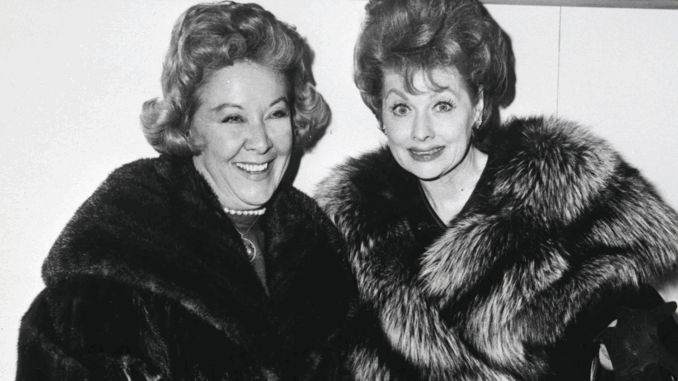
The Genius of Black and White: Why I Love Lucy Never Made a Color Episode
For millions of viewers, the world of I Love Lucy is synonymous with black and white. The iconic redhead, Lucille Ball, the charming Cuban bandleader, Desi Arnaz, and their best friends and landlords, Fred and Ethel Mertz, all live in a universe of stark contrasts and beautiful grayscale. It’s an aesthetic that is so deeply ingrained in the show’s identity that it feels like a creative choice, a stylistic decision to evoke a certain era. But the truth is, the reason behind I Love Lucy‘s lack of color episodes was far simpler, more pragmatic, and a testament to the business genius of its stars.
The choice to film the entire series in black and white was not an artistic one; it was a clever and calculated move to maximize the show’s long-term profitability. This decision, made by the studio heads and co-owners of Desilu Productions, Lucille Ball and Desi Arnaz, would fundamentally change the way television was produced and monetized forever.
The Problem with Film
In the early 1950s, television was still a new and developing medium. Most shows were broadcast live, and a few were recorded on kinescope, a low-quality process that captured the broadcast directly from a TV monitor. This meant that a show could only be seen once, by a live audience, and its future life was limited.
From the very beginning, Desi Arnaz had a different vision. He was a savvy businessman who understood the potential of syndication—the ability to sell a show’s episodes to different television stations for repeated airings. To do this, he needed a high-quality product.
Arnaz partnered with cinematographer Karl Freund, a German-born master who had worked on classic films like Metropolis and The Golem. Together, they created a revolutionary system that used a three-camera setup with 35mm film—the same high-quality film used for motion pictures. This was a radical departure from the live broadcast model. It was also incredibly expensive.
The Color Conundrum
When the team began filming, the technology for broadcast television was still in its infancy. While color television was being developed and experimented with, it was not yet a mainstream reality. The first network color broadcast wouldn’t happen until 1954, and it would be years before color TV sets were in most American homes.
The team behind I Love Lucy knew that if they filmed in black and white, the episodes could be easily broadcast and sold for syndication. But they also knew that color was the future. So, what did they do?
They chose to film in black and white, but for a very specific reason: they wanted to save money and get the most out of their high-quality 35mm film. Color film was far more expensive than black-and-white film. By opting for black and white, they could afford the innovative three-camera setup and the high-quality film that would ensure the show’s long-term viability. They banked on the fact that when color television became standard, the episodes could be colorized. This was a calculated risk that paid off handsomely.
They made this decision for a simple, two-fold reason: syndication and cost. The show was being produced at an astronomical cost for the time, a whopping $50,000 per episode, with the film stock alone being a significant part of that budget. By sticking to black and white, they kept costs down while ensuring the show’s professional quality.
The Syndication Gold Mine
The syndication of I Love Lucy would go on to be a historic success. The decision to film in black and white and on high-quality 35mm film meant that the episodes looked just as sharp and clean decades later. As a result, I Love Lucy was the first television series to ever be syndicated, and it became an absolute cash cow for Desilu Productions.
The show has been in continuous syndication since it first aired, a testament to the foresight of Lucille Ball and Desi Arnaz. The show’s success allowed them to build a television empire, with Desilu Productions going on to produce other classic television shows like The Untouchables and, famously, Star Trek.
This simple business decision is a huge part of the show’s legacy. While other shows from the era that were broadcast live or recorded on kinescope have either been lost to time or exist only in fuzzy, low-quality recordings, I Love Lucy remains vibrant and clear. The black-and-white aesthetic, which now feels like a timeless part of the show’s charm, was born not from creative inspiration but from a clever and pragmatic financial strategy.
In the end, it was a decision that solidified Lucille Ball and Desi Arnaz as not just on-screen legends but as brilliant business innovators. They saw a future for television that no one else did, and they made a simple choice to get there. They chose to embrace black and white, and in doing so, they created a show that would live on, in full color, for generations to come.
